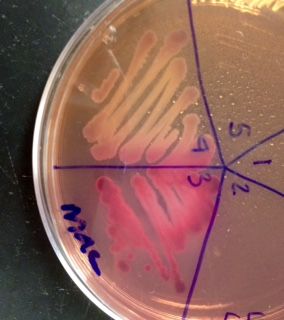 | ||||
Genome, Proteome & Metabolome Compared - P2
SPO VIRTUAL CLASSROOMS
What Is a Metabolome?
A metabolome is all of the metabolites produced by a single organism. Metabolites are substances required for, or produced by, the biochemical reactions of metabolism in living organisms. Like the proteome, the metabolome is closely tied to an organism's genome, but is also influenced by which genes are
transcribed as well as materials that the cell can obtain from its environment.
Page last updated: 12/2015
You have free access to a large collection of materials used in a college-level introductory Cell Biology Course. The VCBC provides a wide range of free educational resources including Power Point Lectures, Study Guides, Review Questions and Practice Test Questions.
PAGE 2 < Back to Page 1
The study of metabolomes enables scientists to look at the relationship between an organism's genotype and phenotype and also the relationship between its genotype and the environment.
In microbiology, identification of the metabolites that an organism can produce is useful in its identification. For example, differential media are used for growing and identifying certain types of bacteria in Petri dishes.
For more information on proteomes and metabolmes, see the Human Metabolome Project, and the article "Thinking Bigproteome Studies in a Post-genome Era". The information presented in this article was researched from these sources.
Additional Resources on Genomes, Proteomes & Metabolomes
- Proteomics: Sequencing & Identifying Proteins interactive tutorial, Children's Hospital Boston.
- "Thinking Bigproteome Studies in a Post-genome Era" by Wilkins, M. & Hochstrasser, D.
- Genetics: Tour of the Basics, Genetic Science Learning Center, University of Utah.
A specialized medium called MacConkey's
(MAC) is used to grow Gram-negative bacteria. This medium also contains the sugar lactose and a pH sensitive dye that turns the bacterial colonies pink if they are able to metabolize lactose.
MacConkey's Agar growing colorless Salmonella (a non-lactose fermenter) and pink E. coli, a lactose fermenter.
 | ||||||
SPO is a FREE science education website. Donations are key in helping us provide this resource with fewer ads.
Please help!
(This donation link uses PayPal on a secure connection.)


